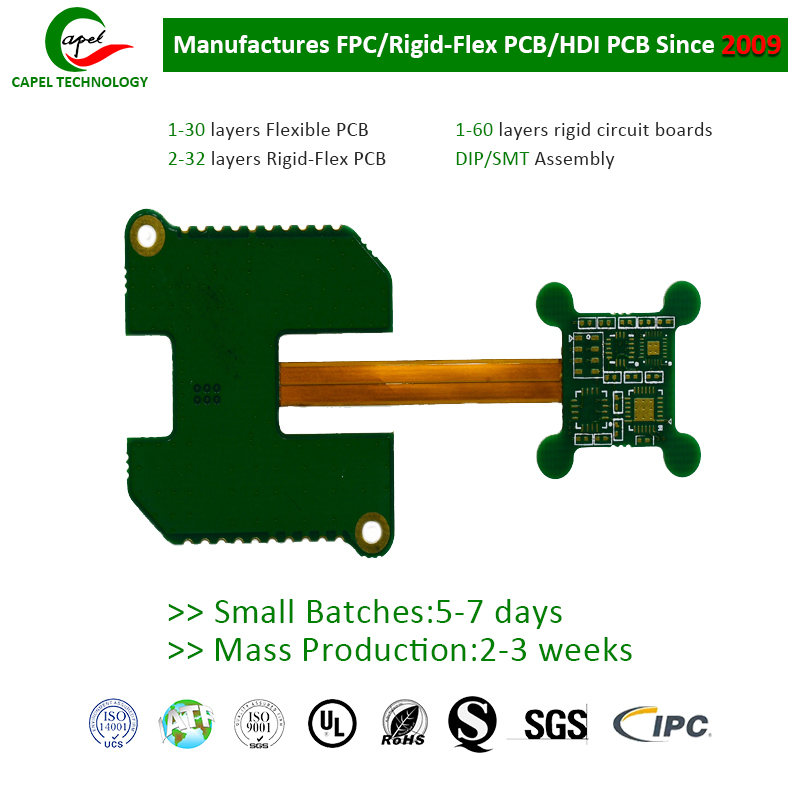In this blog post, we will explore the suitability of rigid-flex PCBs for high temperature conditions and provide insights to help you make an informed decision.
When it comes to electronic devices and their components, one of the key factors to consider is their operating temperature. Different environments may bring different challenges, and high-temperature environments may be particularly demanding.
In recent years, there has been increasing interest in the use of rigid-flex PCBs in a variety of applications. These PCBs offer unique advantages such as space savings, increased reliability and better signal integrity. However, before incorporating them into your design, it is necessary to know whether they can withstand high-temperature environments.
Understand the rigid-flex PCB structure
First, let’s briefly discuss what rigid-flex PCBs are and how they are constructed. Rigid-flex PCBs are hybrid circuit boards that combine rigid and flexible substrates into one unit. They combine the advantages of both types of PCBs, making them versatile and capable of meeting complex design requirements.
A typical rigid-flex PCB consists of multiple layers of rigid materials connected by flexible layers. Rigid layers provide structural stability, while flexible layers allow the board to bend or fold as needed. This unique structure enables PCBs to be used in applications where space is limited or the board needs to conform to a specific shape.
Analyze the effects of high temperatures to rigid-flex PCB
Several factors come into play when evaluating the suitability of rigid-flex PCBs for use in high-temperature environments. The most important consideration is the effect of temperature on the materials used in PCB construction.
The rigid layers of rigid-flex boards are typically made of materials such as FR-4, which are known for their thermal stability and flame retardancy. These materials can typically withstand temperatures up to 130-140°C. However, the flexible layer of PCB is usually made of polyimide or similar materials, which have low heat resistance.
Polyimide materials commonly used in flexible PCBs can withstand temperatures up to 250-300°C. However, prolonged exposure to such high temperatures can cause material degradation, reducing the overall lifespan and performance of the PCB. Therefore, the specific temperature requirements of high-temperature applications must be considered and appropriate materials selected accordingly.
Mitigation Strategies for High Temperature Environments for rigid flexible printed circuit board
While rigid-flex PCBs may have limitations in extreme high-temperature environments, there are several strategies to mitigate the effects and improve their performance.
1. Material selection: Choosing materials with higher heat resistance for the flexible layer can significantly improve the overall temperature resistance of the PCB. Polyimide materials with enhanced thermal properties, such as high Tg (glass transition temperature), can be used in the flexible portion to increase the PCB’s ability to withstand high temperatures.
2. Copper weight and trace width: Increasing copper weight and trace width on the PCB helps dissipate heat more effectively, thereby reducing the risk of localized overheating. Thicker copper traces and heavier copper layers, along with larger conductor cross-sections, enhance the board’s ability to dissipate heat.
3. Thermal management technology: The use of effective thermal management technology, such as heat sinks, heat dissipation holes, and conduction cooling mechanisms, can help keep the average temperature of the PCB within an acceptable range. These technologies help direct heat away from critical components and prevent damage.
4. Testing and verification: Rigorous testing and verification procedures should be conducted to ensure that rigid-flex PCBs can withstand specified high-temperature conditions. Thermal cycling testing, simulation models, and thermal analysis software can provide valuable insights into PCB thermal performance and help identify potential areas of concern.
5. Supplier expertise: It is critical to select a reliable, experienced PCB manufacturer with expertise in high-temperature applications. An experienced supplier can guide you through the material selection process, provide recommendations on mitigation strategies, and deliver high-quality rigid-flex PCBs that meet your specific requirements.
In Conclusion
While rigid-flex PCBs offer many advantages in terms of space savings and reliability, their suitability for high-temperature environments depends on careful consideration of various factors. Understanding the effects of temperature on the materials used, employing appropriate mitigation strategies, and working with experienced suppliers are critical steps in ensuring successful rigid-flex PCB implementation in high-temperature applications.
So, can rigid-flex boards be used in high-temperature environments? The answer lies in careful evaluation of your high temperature requirements, appropriate design and material selection, and the use of effective thermal management techniques. By considering these factors, you can make an informed decision and take advantage of the advantages offered by rigid-flex PCBs while ensuring the reliability of your electronic devices in high-temperature environments.
Post time: Sep-16-2023
Back







